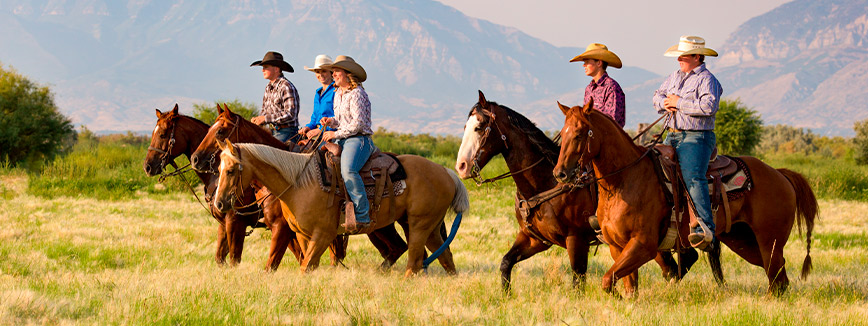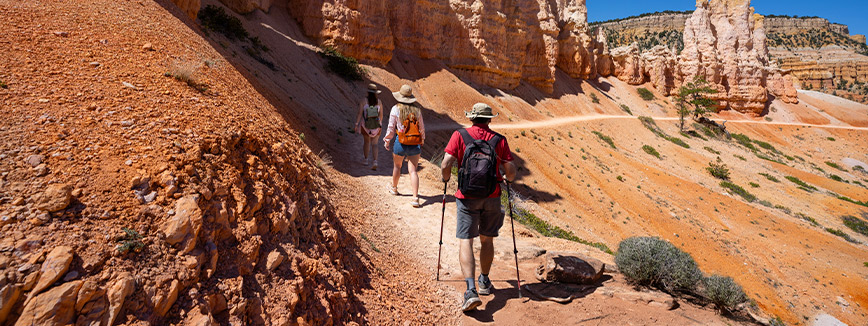8 Differences to Prepare for When Moving from Idaho to Utah
impressive 18.4% population surge over the past decade, attracting professionals and families alike. And it’s easy to see why: the state blends strong job opportunities with a vibrant, outdoor-oriented lifestyle.
From the breathtaking “Mighty Five” national parks (Zion, Bryce Canyon, Arches, Canyonlands, and Capitol Reef) to a booming economy with just 3.2% unemployment, Utah offers both adventure and stability. With a median household income of $98,336 and a flat income tax rate that keeps things simple, the financial outlook is bright for newcomers.
Ready to leap? Here are eight surprising changes to expect before your interstate move.
1. Life in Utah Feels More Social and Community-Driven

Utah and Idaho may share a border, but crossing into the Beehive State brings a noticeable cultural shift. Life here blends city energy with a deep love for the outdoors, mixing pioneer roots with fresh, forward-thinking values.
Here’s what stands out most when moving from Idaho to Utah:
- Community spirit: Utah neighborhoods thrive on connection. Think block parties, volunteer work, and local councils that make it easy to meet people.
- Outdoor lifestyle: The state pulls in over $9.5 billion a year from outdoor recreation, so expect hiking, biking, and national park trips to become part of daily life.
- Social scene: From the Sundance Film Festival to weekend farmers markets, art walks, and food truck rallies, Utah’s social calendar is full.
- Family focus: Utah’s population skews younger, with plenty of family-friendly events, safe neighborhoods, and excellent schools.
- Food culture: The dining scene has exploded, and Salt Lake City alone offers everything from sushi and Thai to local staples like Red Iguana and Crown Burgers.
- Green mindset: Expect solar homes, recycling programs, and eco-conscious living everywhere.
At its core, Utah offers the same warmth, friendliness, and outdoor beauty Idahoans love, just with a more dynamic social rhythm and an extra dash of community energy.
2. It’s Hotter, Drier, and Sunnier Than You Expect
Crossing from Idaho into Utah means more than just a new address; it’s a whole new climate. Utah is the second-driest state in the U.S., averaging just 12 inches of rain a year compared to Idaho’s 30. You’ll notice sunnier skies (around 300 days of sun annually), drier air, and bigger swings between day and night temperatures.
Key Climate Differences:
| Feature | Idaho | Utah |
| Average Rainfall | ~30 inches/year | ~12 inches/year |
| Humidity | 65–70% | ~55% |
| Sunny Days | ~210/year | ~300/year |
| Summer Temps | Mild | 5–10°F hotter, especially south |
| Winter | Wetter snow | Drier, powdery snow (“greatest snow on earth”) |
Tips for adapting to Utah’s dry air and altitude
Living at high elevation with very low humidity creates special challenges. Here’s what helps you adapt:
- Drink more water: Aim for 2–3 liters per day because dehydration hits faster at altitude.
- Use a humidifier: Keeps skin, sinuses, and plants happy in dry air.
- Moisturize often: Look for ceramides and hyaluronic acid to protect your skin.
- Adjust cooking times: Water boils at lower temps, so recipes may need tweaks.
- Ease into activity: Shortness of breath and fatigue are common until you acclimate.
New residents often get headaches, feel tired, and find themselves short of breath during their first few weeks. These symptoms usually go away as your body adapts. Moving during spring or fall makes this transition easier.
3. The National Parks Will Take Your Breath Away

The Beehive State has created an outdoor playground that’s so big and spectacular that millions of people come from all over the world to see it. The best part? You’ll have these natural wonders right in your backyard.
Utah packs its world-class scenery into what locals call “The Mighty Five” – a group of national parks you won’t find anywhere else in America. Zion National Park shows off massive sandstone cliffs and slot canyons. Bryce Canyon glows at sunrise with its otherworldly hoodoo formations. Arches National Park holds more than 2,000 natural stone arches – the most you’ll find anywhere. Canyonlands looks like Mars with its huge desert views. Capitol Reef stretches along a 100-mile wrinkle in Earth’s crust with amazing rock formations.
These crown jewels aren’t all. Utah has seven national monuments, two national recreation areas, and 43 state parks. This landscape unlocks adventures you won’t find in Idaho:
- Desert adventures: Hike slot canyons, bike red rock trails, and climb sandstone cliffs.
- World-class skiing: Enjoy “The Greatest Snow on Earth” at Utah’s legendary resorts.
- Float the Great Salt Lake: Effortless buoyancy in water 10x saltier than the ocean.
- Dinosaur country: Explore world-famous fossil sites and even join real digs.
4. Utah’s Housing Market Is Competitive but Stable
Utah’s housing market can surprise Idaho newcomers. Median home prices average around $548K, compared to $467K in Idaho. While Idaho saw a sharper five-year rise (73.7%), Utah’s 56.6% growth has been steadier, signaling a more balanced market.
| City | Median Home Price | Avg. Rent (2BR) |
| Salt Lake City, UT | $556,117 | $1,650 |
| Provo, UT | $538,300 | $1,325 |
| St. George, UT | $505,000 | $1,400 |
| Boise, ID | $523,250 | $1,450 |
| Idaho Falls, ID | $365,000 | $1,125 |
Where to Look:
- Ogden-Clearfield: 30% cheaper than Salt Lake City, great for young professionals.
- Lehi/Silicon Slopes: Ideal for tech workers, high salaries balance housing costs.
- St. George: Warm climate, strong investment potential.
- Taylorsville & West Valley City: Rentals 15–20% cheaper than Salt Lake City.
Overall, Utah’s market is competitive but stable, offering long-term value and lifestyle perks that make the higher price tag worthwhile.
5. Expect A Slight Bump In Expenses

Utah’s overall cost of living sits about 1% above the national average, close to Idaho, but prices in Salt Lake City can run roughly 4% higher than Boise.
Housing and groceries tend to cost a bit more (around 8% and 1.5% respectively), while utilities are slightly cheaper. Transportation is the biggest jump, averaging notably higher than in Idaho. Still, higher average salaries in Utah help offset these increases.
On average, residents spend about $4,200 per month. Plan for around $177 for utilities, $100 for internet, $60 for cell service, and $320 for groceries per person. Families should also budget for higher childcare costs, averaging $1,300+ per month for infants.
In short, life in Utah costs a little more, but most newcomers find the higher income potential and quality of life well worth it.
6. Utah’s Education System Consistently Outperforms Idaho’s
Ranked 11th in the nation, Utah offers excellent schools, well-paid teachers, and strong support for students from kindergarten through college.
Best Public and Private Schools in Utah
Utah’s dedication to education shows in its top-rated schools, many of which consistently outperform national averages.
- Beehive Science and Technology Academy: Known for STEM excellence and high graduation rates.
- Karl G. Maeser Preparatory Academy: Focuses on classical education and strong college prep.
- Skyline High School: Offers diverse AP programs and award-winning athletics.
- Cottonwood School: Perfect 10/10 rating for academics and student performance.
- American Preparatory Academy: Emphasizes character development and academic rigor.
- Peruvian Park School: Renowned for small class sizes and strong parent involvement.
These schools highlight Utah’s emphasis on educational quality and community involvement, making it a great place for families to settle.
7. People moving from Idaho find real tax advantages in Utah
Idaho uses a progressive income tax structure that ranges from 1% to 6% across multiple brackets. Utah takes a different approach with a flat income tax rate of 4.95% for all taxpayers. This simplification means you pay the same percentage on your earnings, whatever your income level. Higher-income earners from Idaho often save money right away with this system.
Utah makes tax filing easier than many states do. The state keeps deductions and exemptions simple. Families with dependents can benefit from various tax credits too. These include deductions for certain health insurance premiums and health savings account contributions. These savings become more important since Utah’s cost of living runs slightly higher.
8. Speaking Like a Local in Utah
Learning a few Utah expressions helps newcomers fit right in. Locals have a friendly, distinctive way of speaking that might sound unusual to Idaho ears but quickly becomes endearing.
Common Utah Slang and Sayings:
- “Oh my heck!” – A polite exclamation; Utah’s mild version of “Oh my God!”
- “Biffed it” – To take a hard fall or wipeout (especially skiing or snowboarding).
- “Sluff class” – To skip or ditch school.
- “You’re fine!” – Common reply to an apology, meaning “No problem.”
- “St. Geezy” – Local nickname for St. George.
- “Funeral potatoes” – Beloved cheesy potato casserole often served at gatherings.
Utahns also have a few fun quirks. You might hear “Sundee dinner” instead of “Sunday dinner,” or “melk” instead of “milk.” Picking up these small details not only helps you blend in but also gives you a glimpse into Utah’s warm and community-centered culture.
Ready to Make Your Move from Idaho to Utah?

Moving from Idaho to Utah opens doors to incredible national parks, a thriving economy, and endless outdoor adventures. While adjusting to Utah’s unique culture and climate takes time, most Idahoans quickly fall in love with their new home state. When you’re ready to leap, Peasley Transfer & Storage can handle your interstate move with the care and expertise you deserve. As Boise’s trusted moving professionals, we’ll ensure your belongings arrive safely at your new Utah home, so you can focus on exploring everything the Beehive State has to offer. Get your free moving quote today, and let’s start your Utah adventure!

